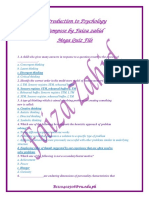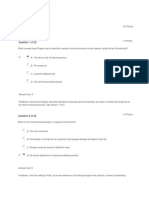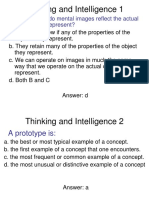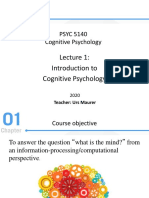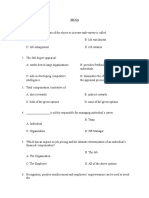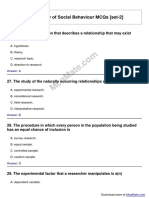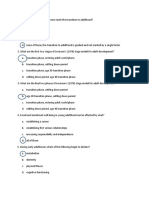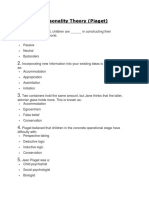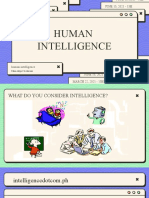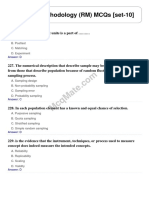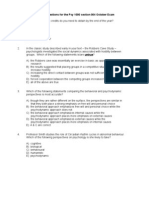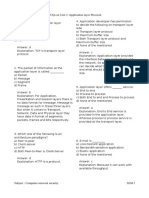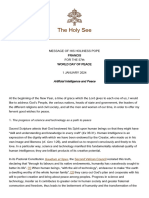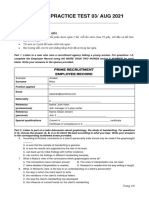0% found this document useful (0 votes)
2K views23 pagesPsy Sample Paper Answer
This document contains a sample question paper and marking scheme for Psychology (Class XII). It includes 20 multiple choice questions in Section A testing concepts related to intelligence, personality, stress, psychological disorders, therapies etc. Section B includes 3 case-based questions requiring short answers. The marking scheme provides the correct answers and explanations for each question.
The questions assess students' understanding of key psychology concepts and theories related to human behavior and mental processes. The marking scheme allows accurate evaluation of student responses.
Uploaded by
ikshitha lakshmiCopyright
© © All Rights Reserved
We take content rights seriously. If you suspect this is your content, claim it here.
Available Formats
Download as DOCX, PDF, TXT or read online on Scribd
0% found this document useful (0 votes)
2K views23 pagesPsy Sample Paper Answer
This document contains a sample question paper and marking scheme for Psychology (Class XII). It includes 20 multiple choice questions in Section A testing concepts related to intelligence, personality, stress, psychological disorders, therapies etc. Section B includes 3 case-based questions requiring short answers. The marking scheme provides the correct answers and explanations for each question.
The questions assess students' understanding of key psychology concepts and theories related to human behavior and mental processes. The marking scheme allows accurate evaluation of student responses.
Uploaded by
ikshitha lakshmiCopyright
© © All Rights Reserved
We take content rights seriously. If you suspect this is your content, claim it here.
Available Formats
Download as DOCX, PDF, TXT or read online on Scribd
/ 23





















